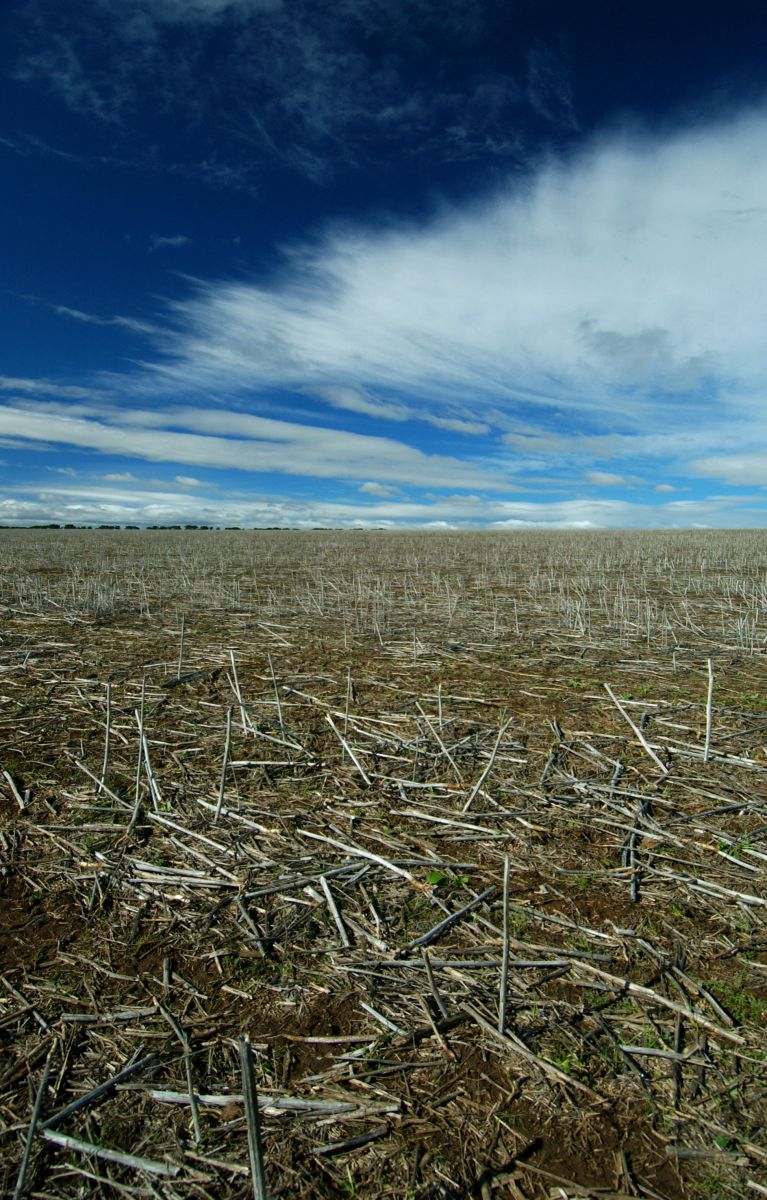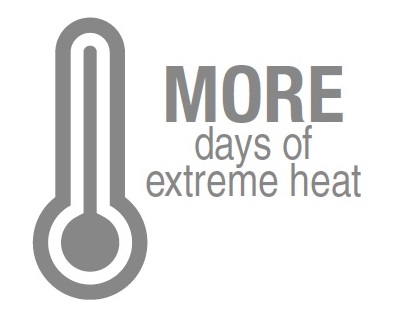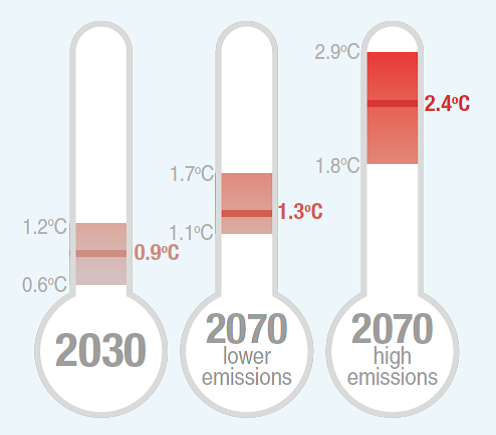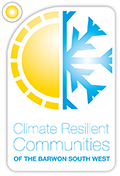Temperature Projections for South West Victoria 
Over the past 100 years, global surface air temperatures have risen by almost 1°C. Both the atmosphere and the oceans have warmed. Annual sea-surface temperatures in south-eastern Australia increased at approximately four times the global average.
Average temperatures in Victoria have risen by approximately 0.8°C since the 1950s. The Barwon South West region has already become warmer and drier – a climate trend likely to continue into the future.
For the near future (2030), the annually averaged warming is projected to be around 0.6 to 1.2°C above the climate of 1986–2005. By the year 2070, the projected range of warming is 1.1 to 2.9°C, depending on future emissions.
Extreme temperatures are likely to increase at a similar rate to average temperature. There will be a substantial increase in the temperature reached on hot days. There will be more hot days (greater than 35°C), and warm spells will last longer.
In the future, the Barwon South West region can expect:

Projected annual average temperature changes for the Barwon South West region are as follows:

Climate change projections for the region also indicate:
- More hot days and warm spells;
- Fewer frost days;
- Average temperatures will continue to increase in all seasons; and
- Increase in solar radiation and decrease in relative humidity.








